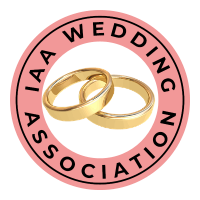How do the Guidelines Require Accessibility for All
Increased scrutiny has made Web Accessibility a hot issue around the globe. In the United States, law firms are aggressively suing businesses and institutions. These claims say that their websites fail to satisfy both Title III of the American Disabilities Act and Section 508 of the Rehabilitation Act.
WCAG 2.0 had provided guidelines, rather than laws or regulations. In the United States, Congress failed to enact any meaningful legislation to provide firm directions on how to proceed. In the European Union they acted and passed the General Data Protection Regulations. The GDPR provides strong rules and regulations and tells exactly how individuals data must be handled.
What Does Web Accessibility Mean to the Disabled?
Most of us are familiar with how Accessibility applies to physical business places. However, little thought has been given to how Accessibility applies to the Internet. Accessibility on the World Wide Web demands that we break down barriers and open a clear path for everyone.
This means that web pages must be designed so that those with Visual, Hearing, Motor and Cognitive disabilities have an equal opportunity to navigate and access every web page.
What Does WCAG 2.0 Tell Us is Important for Accessibility
Published in 2008, WCAG 2.0 consists of twelve guidelines that are organized under four principles. The four WCAG principles, frequently called P.O.U.R., require that all websites must be perceivable, operable, understandable, and robust.
Each guideline also has testable success criteria. To help web designers meet WCAG 2.0 guidelines a group of techniques were developed. These techniques come with their own criteria to measure success.
How do the Four Principles Make Your Content Accessible?
In the following sections we will take a closer look at each of the four WCAG 2.0 principles. We will discuss how the four P.O.U.R. principles, perceivable, operable, understandable, and robust must be rooted in every aspect of our website design.
A study conducted by the University of Utah analyzed over 1,000,000,000 website home pages for web accessibility. Their findings were a mixed bag of results, with 97.8% of home pages having WCAG 2.0 conformance failures. The good news is that WCAG many WCAG conformance failures can be easily remedied.
Let’s take a look at each of the WCAG 2.0 principles and the guidelines reccomended for each principle.
Perceivable Principle
Your web information and user interface components must be presented to users in ways that they can perceive.
- Guideline 1.1: Provide text alternatives for any non-text content so that it can be changed into other forms people need, such as large print, braille, speech, symbols or simpler language.
- Guideline 1.2: Time-based media: Provide alternatives for time-based media.
- Guideline 1.3: Create content that can be presented in different ways (for example simpler layout) without losing information or structure.
- Guideline 1.4: Make it easier for users to see and hear content including separating foreground from background.
Operable Principle
Your web user interface components and navigation must be operable by your visitors.
- Guideline 2.1: Make all functionality available from a keyboard.
- Guideline 2.2: Provide users enough time to read and use content.
- Guideline 2.3: Do not design content in a way that is known to cause seizures.
- Guideline 2.4: Provide ways to help users navigate, find content, and determine where they are.
Understandable Principle
Your visitors must find your information and the operation of user your interface to be understandable.
- Guideline 3.1: Make text content readable and understandable.
- Guideline 3.2: Make web pages appear and operate in predictable ways.
- Guideline 3.3: Help users avoid and correct mistakes.
Robust Principle
Your web content must be robust enough that visitors can interpret it reliably using a wide variety of user agents and assistive technologies.
- Guideline 4.1.: Maximize compatibility with current and future user agents, including assistive technologies.
You Should Act Immediately to Make Your Content Accessible
Place a Strong Accessibility Statement on Your Website
What you definitely should do first is place a strong Accessibility Statement on your website. Then audit your site to check it’s accessibility and discover it’s shortcomings. Next you need to decide if it’s time to redesign your site to address what you discovered during your audit.
Does your site need to be completely redesigned to embrace accessibility. If it does, find a web developer with the web accessibility knowledge required. Then begin the redesign process.
If your site has been built using WordPress there are many options available to help you acheive web accessibility. Look for themes or plug-ins designed to help make your site accessible.
I chose the DIVI theme which has a robust approach to helping you make your site accessible for all.

